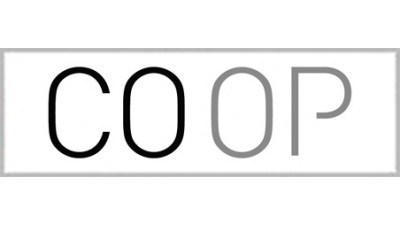A National Branding Company Sets Its Sights On LA's Growing Real Estate Market

Competition in the real estate industry is fiercer than ever. Whether developing a high-rise office tower, luxury apartment building or large-scale mixed-use project, real estate developers all share the same objective: success.
So how can developers stand out in a crowded landscape? When they only focus on highlighting location and square footage, they lose out. Today’s tenants are looking for more than just a price per square foot. Office space can no longer just be beautiful — exciting things have to happen there.
“The challenge is that many owners and developers only focus on selling the rational aspects of a building, like the size and the amenities,” said Jim Moran, founding partner and CEO of CO OP, a national destination brand company. “When they realize that their competition is saying exactly the same thing, they need to find new, creative ways to differentiate themselves.”
Moran’s team specializes in “destination branding,” an approach that looks at a building through the eyes of its future tenants to determine what experiences it can offer that will differentiate it in the market. This approach unlocks the building’s unique brand story and defines what experiences it can offer that will both differentiate it among the competition and deliver the highest return on investment.
For the past 17 years, Moran’s New York City-based team of strategists, designers, writers and marketers has been helping properties across every category of real estate stand out in the biggest cities across the United States. Since opening an LA office late last year, Moran has decided to move to Los Angeles and bring CO OP’s unique approach to the West Coast. Bisnow sat down with Moran to discuss destination branding and his plans for LA.
Bisnow: What is the biggest challenge of branding a commercial building?
Moran: Employees want more than just a cubicle. Today’s workplace is becoming more lifestyle-focused, so in order to attract and retain the best talent, CEOs and developers need to focus on selling a distinctive work experience.
They need to understand that branding a building in a way that drives an emotional connection will give them a competitive advantage, a higher price per square footage and faster lease-up times.

Bisnow: What is a successful brand experience you have brought to a building?
Moran: We strive to look beyond typical brand solutions like a new website and new signage to uncover how to solve a building’s deeper challenges. One example is while working on RXR’s Starrett-Lehigh Building in NYC, we discovered that due to slow elevators and a far west location, tenants lacked viable lunch options. We found that by utilizing old freight elevators, food trucks could come directly into the building and offer diverse lunch options to the tenants.
This improved tenant satisfaction and fostered a newfound sense of community by bringing different companies together. This project, as well as other CO OP projects, including SL Green’s One Vanderbilt, Brooklyn Navy Yard and Divco West’s Cambridge Crossing, have seen higher occupancy numbers and increased rents since embracing destination branding.
Bisnow: What are some of the modern real estate branding trends you have encountered?
Moran: At this year’s ICSC RECon, I was drawn toward booths that were well-programmed and immersive. Some examples include a live mural painting, marshmallow ball pit and a do-it-yourself candy bar that celebrated a local candy shop.
We apply that same thinking when creating marketing centers for our clients. The days of foam core renderings and floor plan printouts are long gone. It’s about creating engaging, shareable experiences that are rooted in the brand strategy and allow buildings to stand out from the masses.

Bisnow: What are you excited about in the LA market?
Moran: In the last five years, we’ve seen a much bolder approach to real estate development take hold in Los Angeles.
In New York, most destination brands reflect a business-first, no-nonsense mentality, while in LA, the best destination brands incorporate the coolness and star appeal of its entertainment heritage. However, since officially becoming the host city for the 2028 Olympics, we’re seeing an increased global influence in LA brands. We’re noticing more developments that appeal to international audiences, which have an incredible opportunity to transform the city.
Bisnow: What are some branding plans you have for the LA real estate market?
Moran: LA has always been known for more flashy and flamboyant brands, but we believe that great design without a great business strategy is pointless. We offer a different, more human approach that we’ve demonstrated in the largest markets we work in, including Houston, Boston, Washington, D.C., and Nashville.
Most real estate branding and marketing decisions are driven by insider knowledge. For example, if a developer wants to achieve the highest price per square foot, they use their demographic data to create a brand that is intended to appeal to an affluent demographic. This type of branding tends to end up cliché and lacking emotion.
Our approach is to look at real estate through a human lens, asking questions like: How does this place both fit into its surroundings, but offer something new? What's the most memorable aspect of this place? Then, we craft a branding strategy that highlights the answers to those questions.
After opening our LA office last fall, we recognized the incredible demand for CO OP’s unique destination branding approach. I’m thrilled to put CO OP’s stamp on the LA market and beyond.
This feature was produced in collaboration between Bisnow Branded Content and CO OP. Bisnow news staff was not involved in the production of this content.

